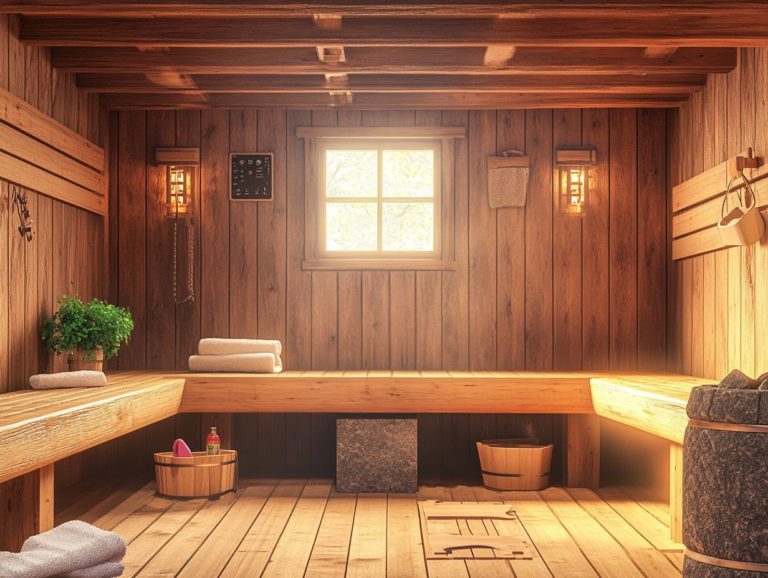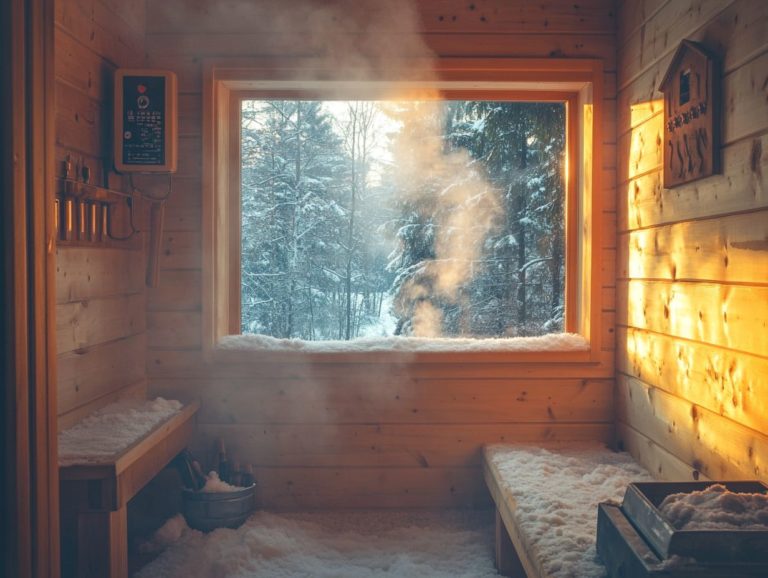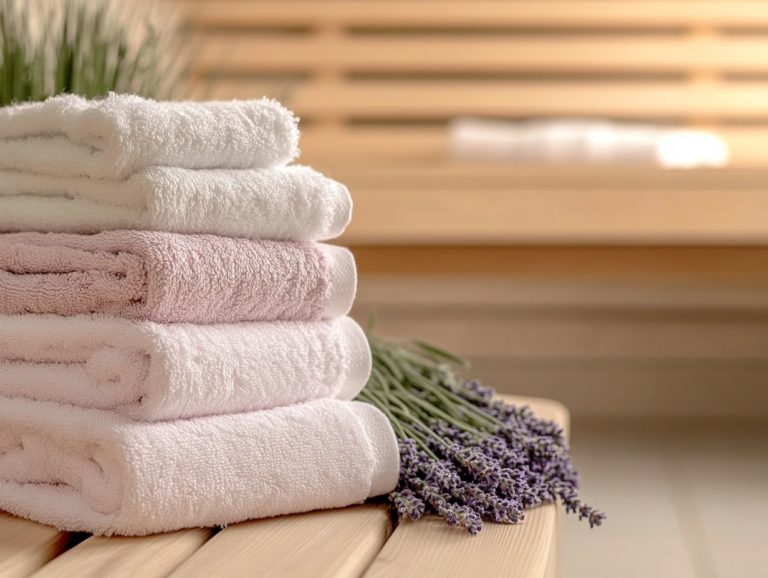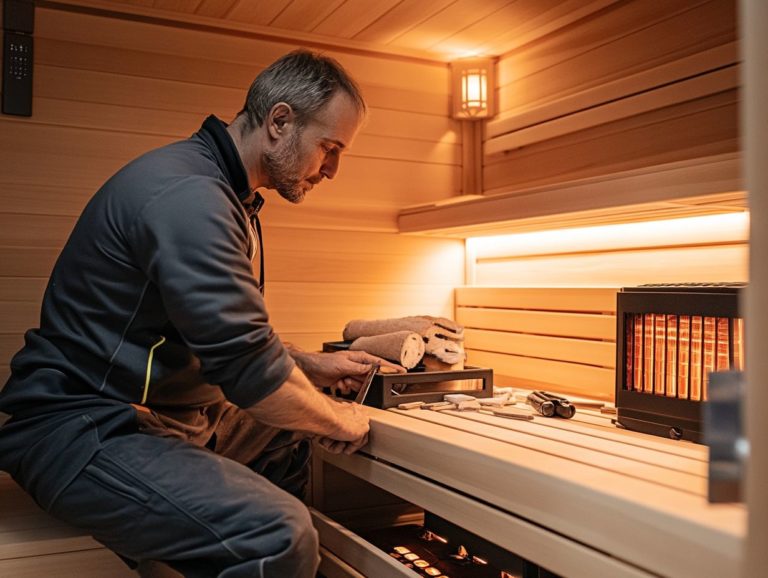How to Inspect Your Sauna for Damage
Ensuring the longevity and safety of your sauna is paramount for an indulgent and relaxing experience.
Conducting regular inspections is crucial; it allows you to identify potential issues before they develop into more significant problems.
In this article, you’ll discover the importance of routine checks, recognize common signs of damage, and follow a clear inspection process.
Whether you’re contemplating DIY repairs or looking to enlist professional assistance, you’ll find practical tips designed to help you maintain your sauna and keep it in pristine condition for years ahead.
Contents
Key Takeaways:
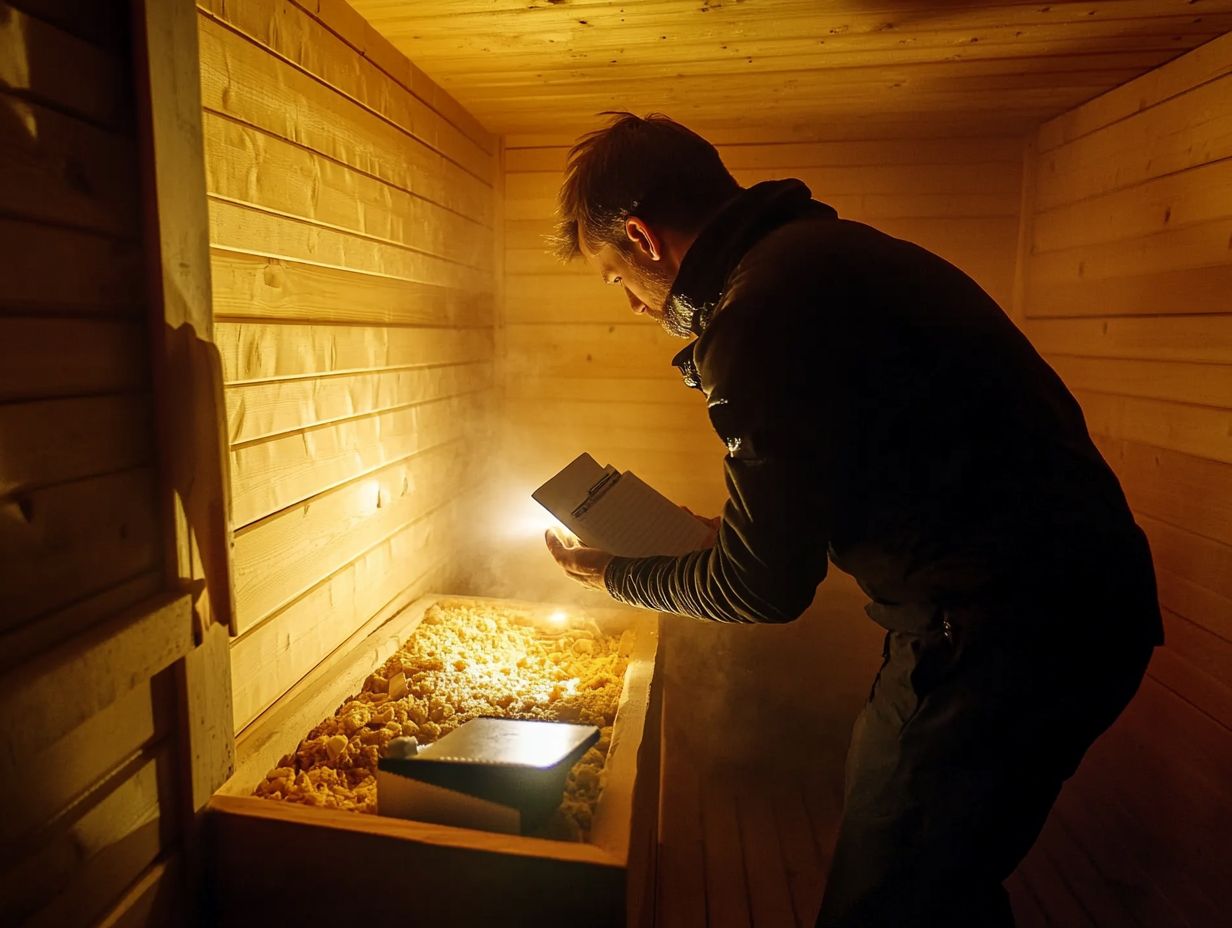
- Regular inspection of your sauna is crucial for safe usage.
- Identifying signs of damage, like cracks or rust, prevents larger issues.
- Consider the complexity of damage to decide on DIY repairs or professional help.
The Importance of Regular Inspection
Regularly inspecting your infrared sauna is essential for achieving optimal performance.
This practice extends its lifespan and maintains a safe, hygienic environment for users.
By doing regular checks, you can catch potential issues early, like electrical malfunctions and moisture buildup.
These issues could compromise both functionality and safety.
Using a maintenance checklist and referring to the user manual will help you establish an effective cleaning routine and integrate hygiene practices that elevate your overall sauna experience.
Why Inspecting Your Sauna is Crucial
Inspecting your infrared sauna is essential, as it helps reveal any hidden maintenance issues, ensuring not only user safety but also enhancing your overall sauna experience.
Regular assessments are key to preventing potential hazards, such as mold and bacteria buildup, which can compromise cleanliness and pose health risks for users.
Act now to implement effective hygiene practices and follow these maintenance tips. This will help you extend your sauna’s life significantly!
Routine checks will help you identify areas in need of repair or cleaning, ultimately fostering a more pleasant and healthy environment.
Prioritizing these preventative measures not only protects users but also enriches their overall experience, allowing them to fully savor the soothing benefits of the sauna.
Common Signs of Damage
Identifying the common signs of damage in your infrared sauna is essential for preserving its longevity and ensuring a safe and enjoyable sauna therapy experience.
By staying vigilant, you can safeguard your investment and enhance the benefits of your wellness routine.
Identifying Potential Issues

Identifying potential issues in your infrared sauna requires a discerning eye and a solid grasp of common problems that can arise within its components.
Regular inspection routines are vital for maintaining the sauna’s integrity.
You should routinely examine the heating elements to ensure they’re functioning optimally, and verify that seals and fittings are intact to prevent energy loss.
Wood care is equally important; using the right wood treatments will shield against moisture damage and wear.
Implementing effective mold prevention techniques is essential as well.
You must also regularly check the ventilation systems to ensure proper air circulation.
Keeping the area around the sauna dry will help limit bacteria growth, thereby safeguarding your health and extending the sauna’s lifespan.
How to Inspect Your Sauna
Inspecting your infrared sauna requires a systematic approach, where you follow a step-by-step guide that encompasses essential maintenance tips.
By using the right cleaning supplies, you can ensure a thorough evaluation and proper upkeep, keeping your sauna in optimal condition.
Don’t wait! Start your sauna inspection today for a safer and more enjoyable experience!
Step-by-Step Guide
A step-by-step guide for inspecting your infrared sauna involves several critical phases that you should consider, including assessing the sauna environment, checking the ventilation system, and doing regular cleaning to promote hygiene and longevity.
- To kick off this process, evaluate the overall atmosphere within the sauna. Ensure it remains dry and free from excess humidity, as that can lead to unwanted mold growth.
- After this initial assessment, inspect the ventilation system for any blockages or inefficiencies, allowing fresh air to circulate effectively.
- Implementing safety precautions is essential; make sure all electrical components are functioning and that any surfaces are free from allergens.
- Establish a consistent cleaning schedule. This not only enhances your overall experience but also significantly extends the lifespan of the sauna. Regular maintenance should be an integral part of your detailed inspection routine.
Addressing and Repairing Damage
When addressing and repairing damage in your infrared sauna, you have options. Depending on the severity and nature of the issues with the sauna components, you can fix the sauna yourself or seek out professional assistance.
DIY vs Professional Repair
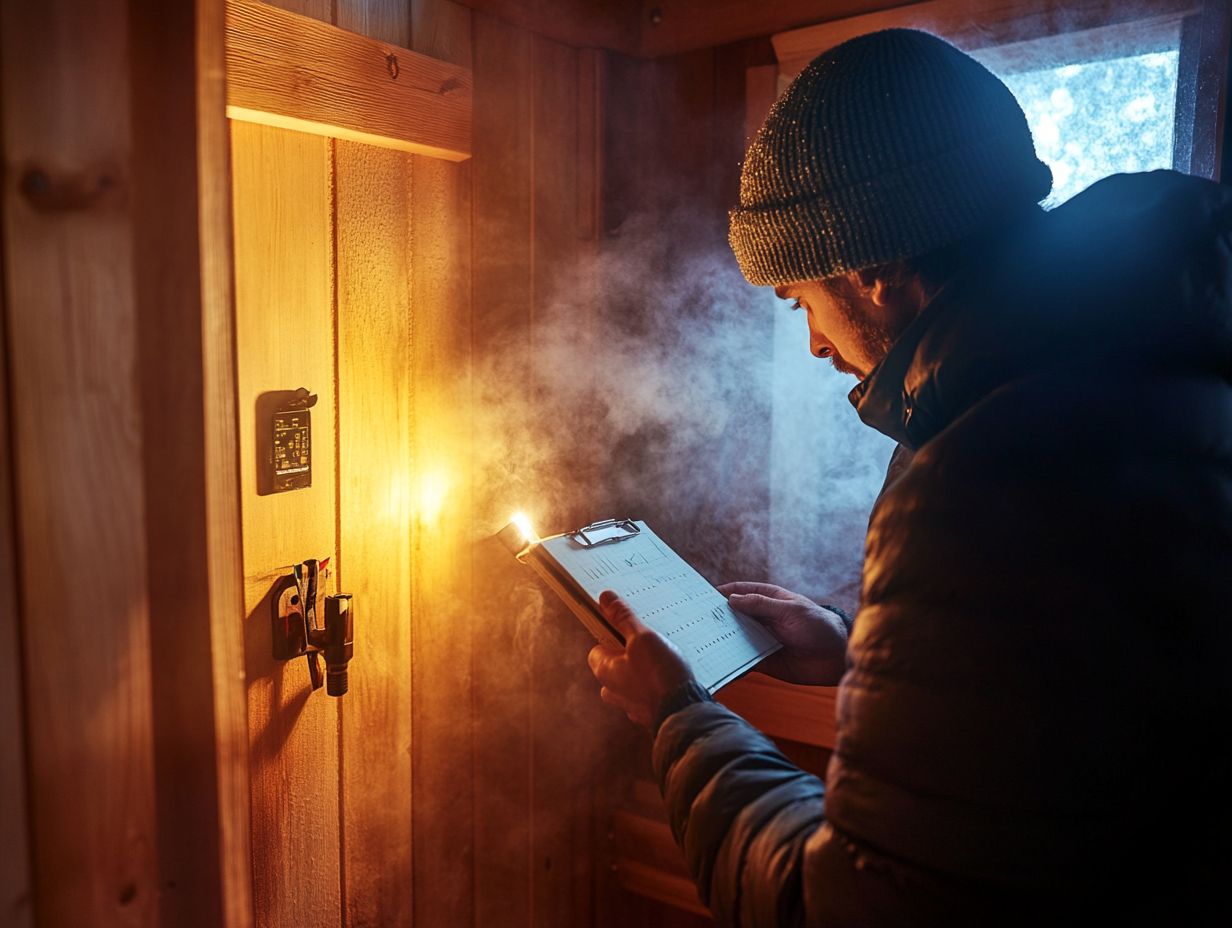
The decision between DIY solutions and professional repair services hinges on your comfort level and the complexity of the issues at hand, such as electrical problems or damaged components.
If you have a knack for handywork, tackling minor maintenance tasks like replacing light bulbs or cleaning the heating elements can be cost-effective and fulfilling. If you encounter complex electrical issues or structural repairs requiring specialized knowledge, consult professionals who have the expertise and tools needed.
Understanding your sauna’s specific needs will guide you in making informed decisions. With the right maintenance tips and quality cleaning supplies, you can often address simple concerns, allowing you to relish the soothing experience of your sauna without the burden of more significant repairs. Additionally, be sure to follow tips for safe sauna use in public facilities to enhance your relaxation experience.
Maintaining Your Sauna for Longevity
To ensure your infrared sauna stands the test of time, follow these fun maintenance tips and grasp the ideal cleaning frequency. This commitment will keep your sauna in peak condition and ready to provide you with years of therapeutic benefits.
Tips for Preventing Damage
Keep your sauna in tip-top shape! Preventing damage is all about implementing effective maintenance tips, using the right cleaning techniques, and staying vigilant against potential risks like mold and bacteria growth.
- Establish a routine that includes regular inspections and a thorough cleaning of surfaces.
- Use gentle, non-toxic cleaning supplies that sanitize effectively without harming the materials of your sauna.
- Safety precautions are essential; always ensure the sauna is powered off and cool before diving into any maintenance work.
- Keep the sauna dry and well-ventilated to enhance your overall experience and minimize moisture-related issues.
By staying proactive and attentive to these guidelines, you can enjoy a safe and enduring sauna experience.
Frequently Asked Questions
1. How do I know if my sauna is damaged?
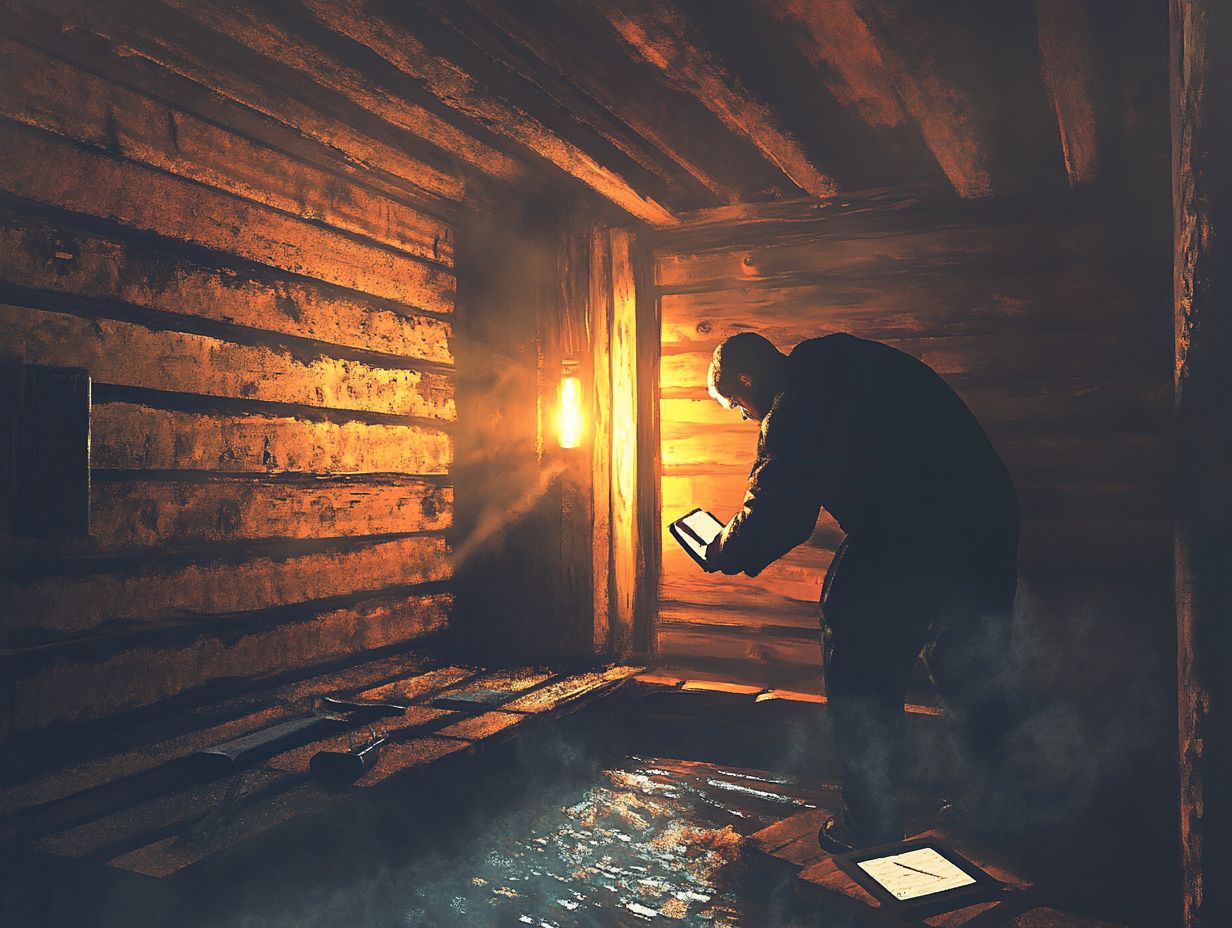
There are a few signs to look out for to determine if your sauna is damaged. These include cracks or holes in the walls, warped or broken wood, and malfunctioning heating elements.
2. What should I inspect when checking my sauna for damage?
When inspecting your sauna, check the walls, floor, door, and seating for any visible damage. You should also test the heating elements to ensure they are working properly.
3. Can I Fix Small Damage to My Sauna?
If the damage is small, like a crack or loose wood, you might be able to fix it yourself. If you re unsure or if the damage is serious, contact a professional.
4. Should I Inspect My Sauna Regularly?
Yes, inspect your sauna at least once a month. This helps catch problems before they worsen and extends your sauna’s life.
5. What If I Find Major Damage in My Sauna?
If you find major damage, like a large crack or broken heating element, it s best to call a professional. Trying to fix it yourself could lead to more problems or safety risks.
6. How Can I Protect My Sauna?
To protect your sauna, use it properly and follow the manufacturer s maintenance guidelines. Watch for minor issues and fix them quickly to avoid bigger problems.

